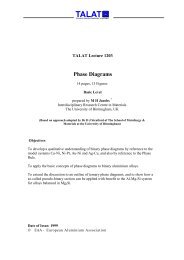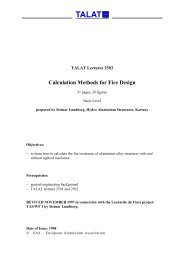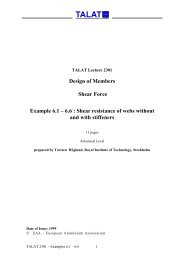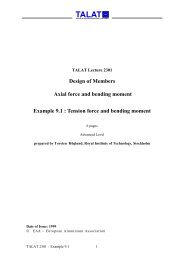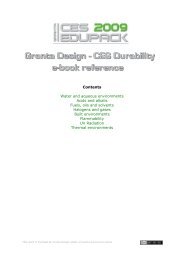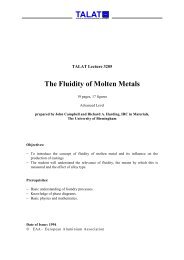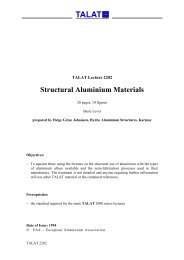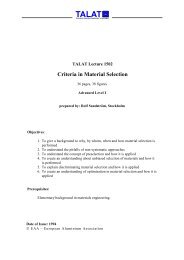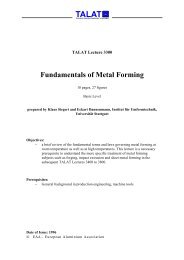TALAT Lecture 3502 - CORE-Materials
TALAT Lecture 3502 - CORE-Materials
TALAT Lecture 3502 - CORE-Materials
You also want an ePaper? Increase the reach of your titles
YUMPU automatically turns print PDFs into web optimized ePapers that Google loves.
a) b) c) d)<br />
Source: K.Siegert<br />
alu<br />
Training in Aluminium Application Technologies<br />
Operation Steps during Solid Backward<br />
Impact Extrusion<br />
a) Inserting the slug<br />
b) Compressing the slug<br />
Operation Steps during Solid Backward<br />
Impact Extrusion<br />
<strong>TALAT</strong> <strong>3502</strong> 7<br />
Pressing punch with<br />
die head<br />
Work-piece<br />
Holder (container)<br />
Ejector punch<br />
c) Impact extrusion<br />
d) Ejecting the finished part<br />
<strong>3502</strong>.03.02<br />
Figure <strong>3502</strong>.03.03 shows the operational steps during „hollow forward“ impact<br />
extrusion. A shell (or cup) is formed into a shell with reduced wall thickness. The<br />
contours of the impact are created by the internal contours of a shaped punch.<br />
Source: K.Siegert<br />
a) Inserting the slug<br />
b) Compressing the slug<br />
alu<br />
Training in Aluminium Application Technologies<br />
Operation Steps during Hollow Forward<br />
Impact Extrusion<br />
a) b) c) d)<br />
Operation Steps during Hollow<br />
Forward Impact Extrusion<br />
Pressing punch<br />
Work-piece<br />
Holder (container)<br />
Ejector punch<br />
Die<br />
c) Impact extrusion<br />
d) Ejecting the finished part<br />
<strong>3502</strong>.03.03<br />
There are four different ways to design a punch for hollow impact extrusions which are




